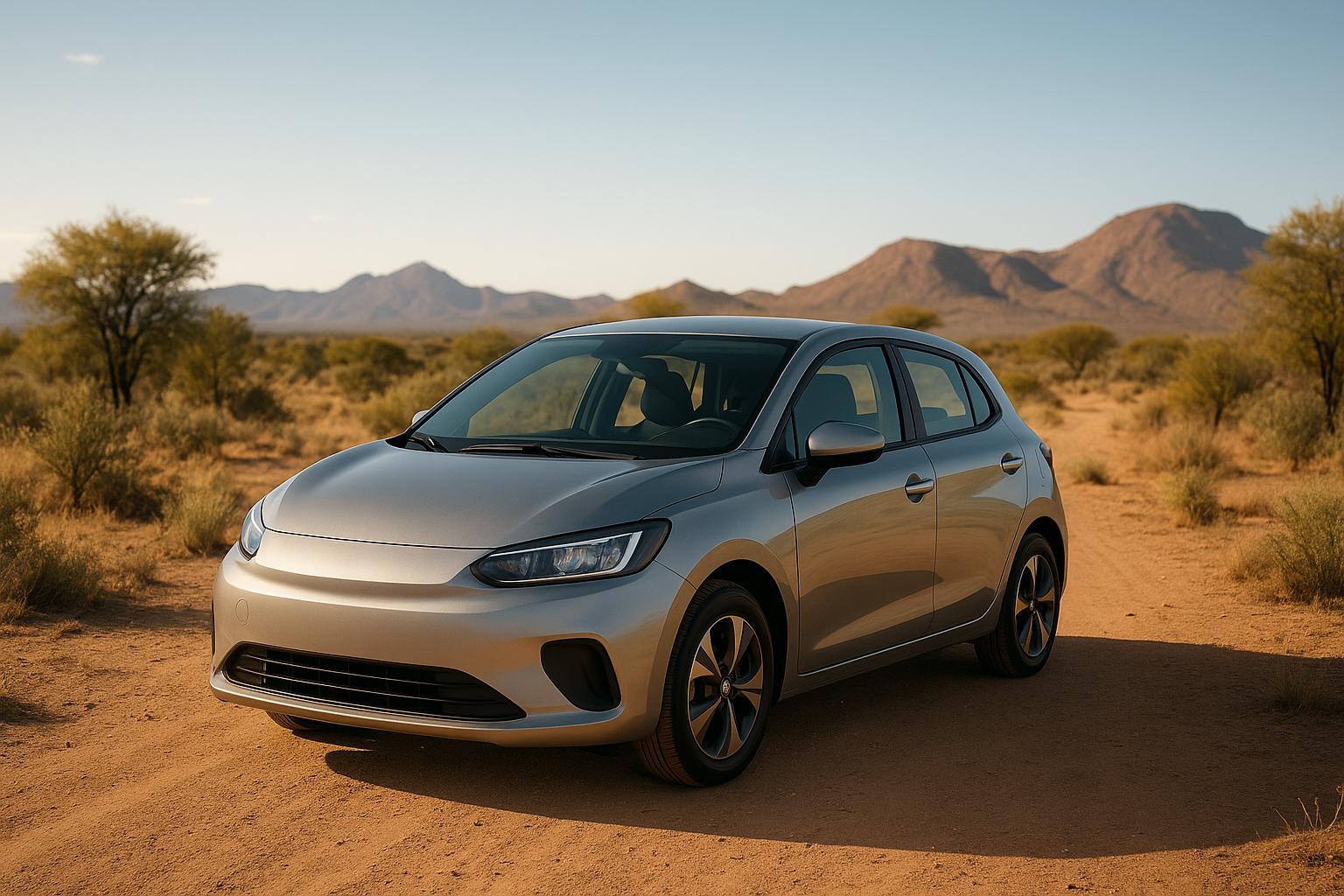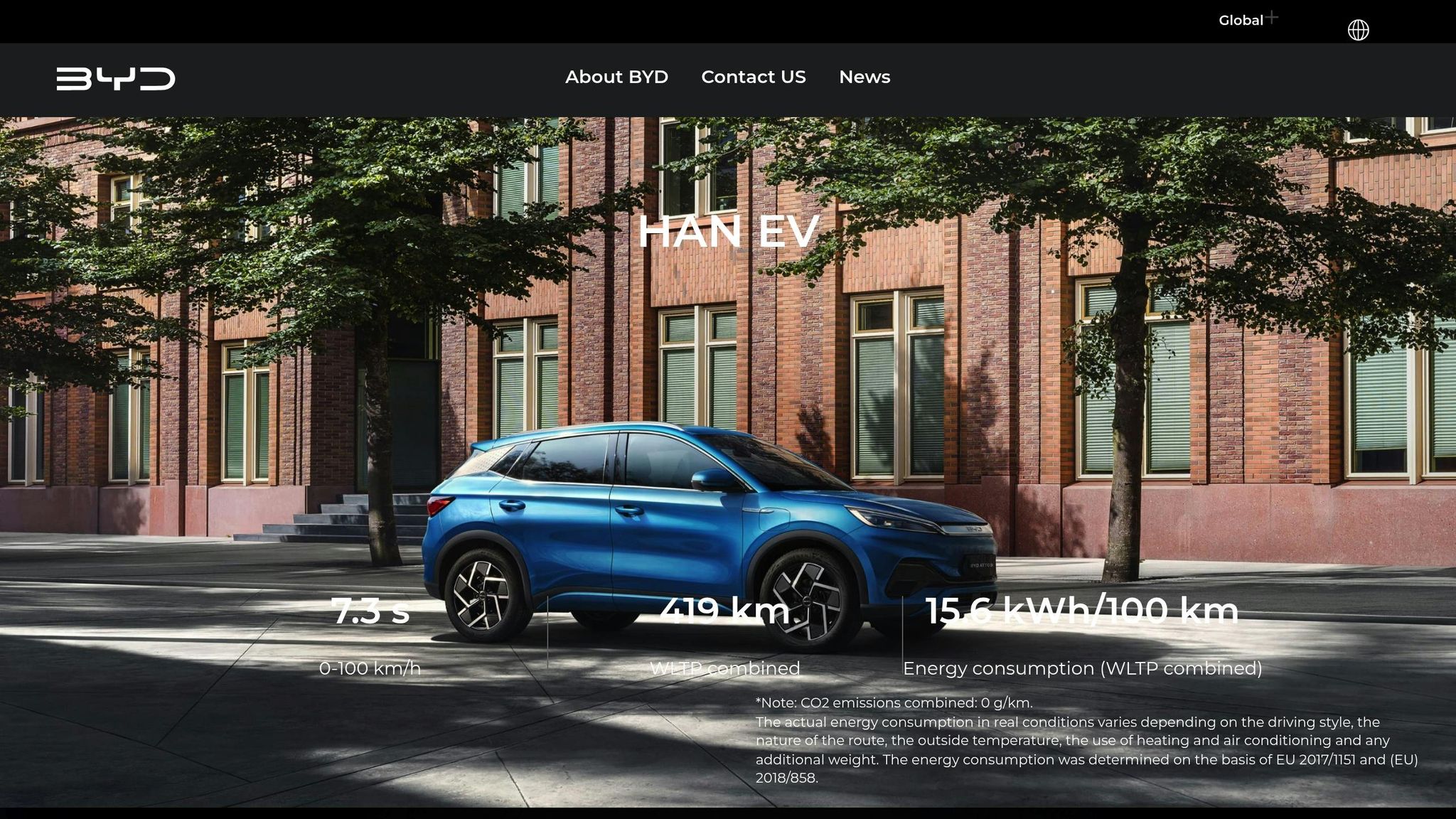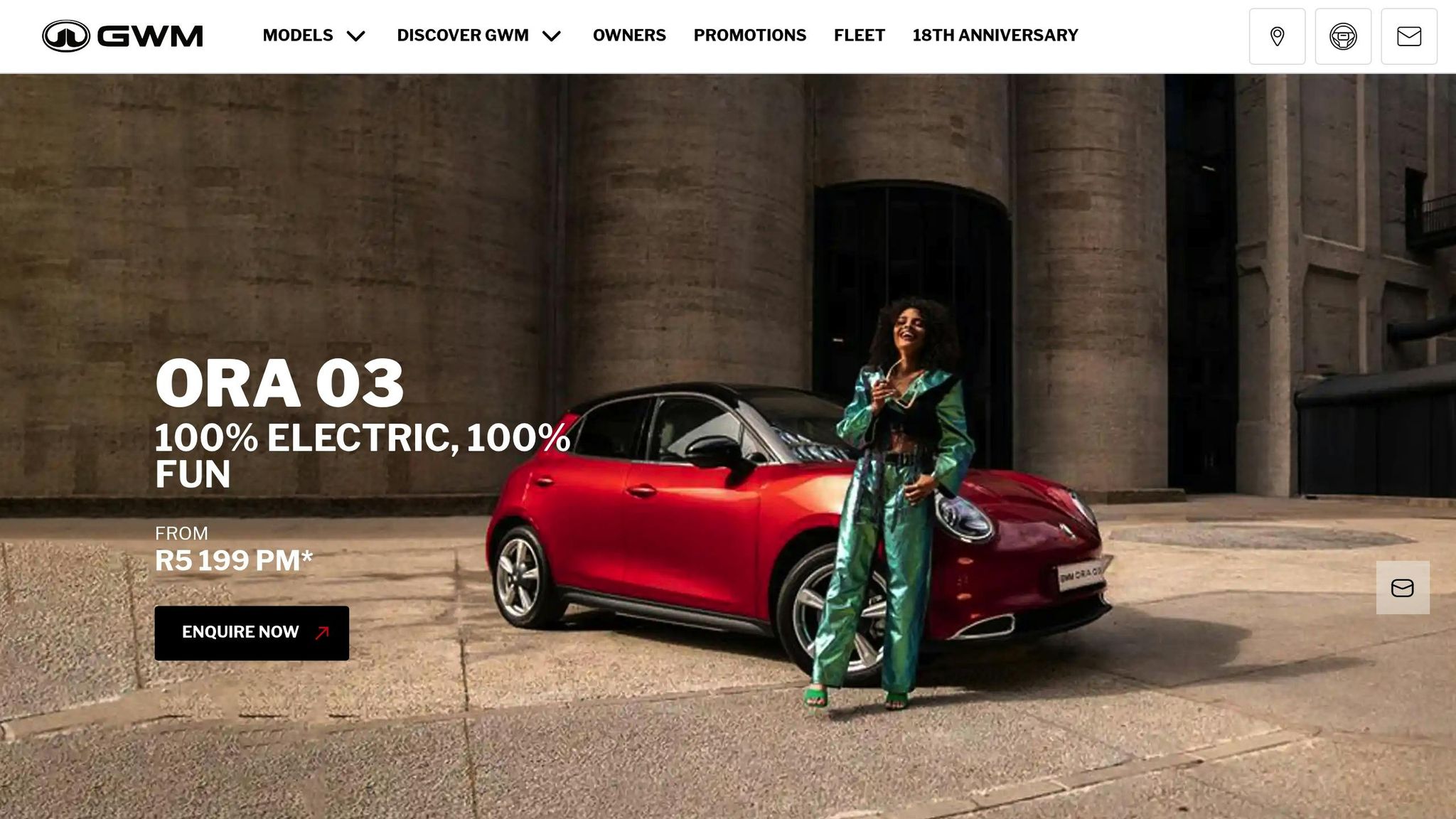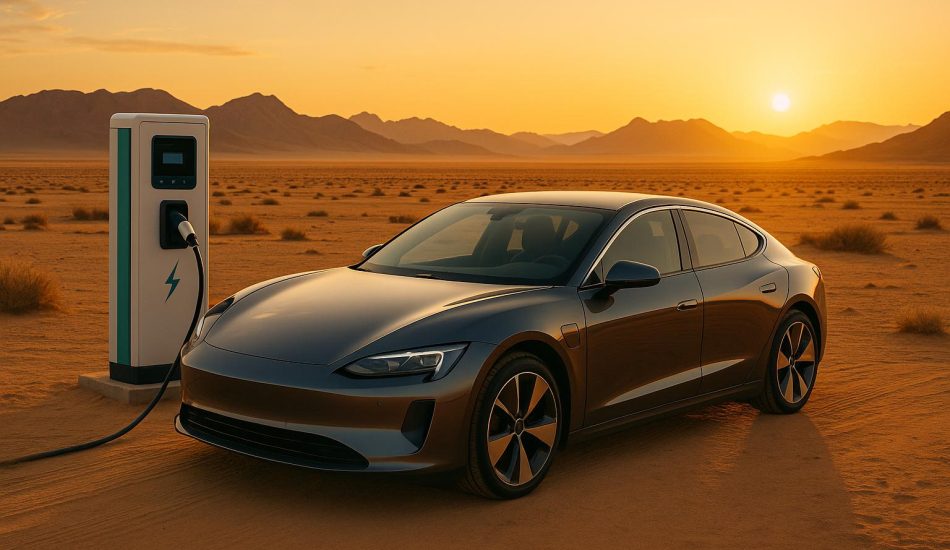
The Nissan Leaf is currently the most affordable electric vehicle (EV) option in Namibia. It’s widely available through local distributors like Electric Vehicles Namibia cc, ensuring easy access to maintenance and parts. Prices range between $7,800 and $15,100, depending on the model year and specifications. Its range of 68–93 miles (110–150 km) per charge is ideal for urban travel, with the potential to cover up to 124 miles (200 km) in a day with intermittent charging.
Other contenders include the BYD Atto 3 and GWM ORA 03, but limited local information on pricing, range, and availability makes the Nissan Leaf the most practical choice for budget-conscious drivers.
Quick Comparison:
| Feature | Nissan Leaf | BYD Atto 3 | GWM ORA 03 |
|---|---|---|---|
| Price (FOB) | $7,800–$15,100 | Details pending | Details pending |
| Range | 68–93 miles | Details pending | Details pending |
| Local Support | Established | Limited info | Limited info |
For Namibians seeking a cost-effective switch to EVs, the Nissan Leaf offers the best combination of affordability, reliability, and local support.
Nissan Leaf electric vehicle successfully test drives to Swakopmund

1. Nissan Leaf
The Nissan Leaf has carved out a solid reputation in Namibia’s growing electric vehicle (EV) market. This five-door hatchback is well-suited for urban and suburban driving, making it a practical choice for many Namibian drivers.
Purchase Price
The price of the Nissan Leaf in Namibia varies depending on the model year and its specifications. However, it’s considered an affordable entry into the world of electric mobility. Electric Vehicles Namibia cc imports and sells the Leaf locally, offering a budget-friendly solution for those looking to make the switch to EVs. For example, Oiltechnologies Namibia added a Nissan Leaf to their fleet in 2018 to support their business operations.
Beyond its approachable price, the Leaf is designed to meet the needs of everyday drivers, offering a range that fits most urban routines.
Range
The Nissan Leaf provides a range that’s ideal for daily commutes. Standard models deliver up to 68 miles (110 km) per charge, while the 30 kWh versions extend that to around 93 miles (150 km). When recharged throughout the day, the Leaf can easily cover 200 km in a single day.
"The Nissan Leaf from EVs (Electric Vehicles) Namibia cc is a 5-door EV and ideally suited for driving in and around town for distances up to 110 km (150 km for the 30 kWh models) on a single charge. If it is plugged in, in between trips, 200km is easily achievable in one day."
This makes the Leaf a great fit for city driving, running errands, and business activities in places like Windhoek and other urban areas in Namibia.
Charging Compatibility
The Nissan Leaf supports a variety of charging options, making it convenient for Namibian EV owners. Many drivers install home chargers to take advantage of overnight charging, while the growing public charging infrastructure in cities like Windhoek adds further convenience.
Namibia’s abundant sunshine has also led to the rise of solar-powered charging solutions, which offer a sustainable and cost-effective way to keep the Leaf powered up.
Local Availability
Electric Vehicles Namibia cc serves as the primary distributor of the Nissan Leaf, ensuring that local buyers have access to essential services like maintenance, parts, and technical support. This local presence eliminates the need to rely on international suppliers, making ownership more convenient.
The company’s focus on the Namibian market has helped the Nissan Leaf establish itself as a reliable option for the country’s conditions, with local support reinforcing its practicality and appeal.
2. BYD Atto 3

The BYD Atto 3 has recently entered Namibia’s electric vehicle scene, offering a compact SUV option that blends modern styling with practical features. It’s a great pick for those looking for a bit more room compared to smaller hatchback EVs.
Purchase Price
While specific local pricing isn’t widely available, similar models have Free on Board (FOB) prices ranging from $7,800 for older versions to $15,100 for newer ones, before factoring in local taxes and import duties. This positions the Atto 3 as a solid mid-range choice among Namibia’s growing EV options.
Range
Details about the Atto 3’s driving range are currently unavailable. For accurate information, reaching out to local importers is recommended.
Charging Compatibility
The BYD Atto 3 is compatible with Namibia’s growing public charging infrastructure, especially in urban hubs like Windhoek. Many owners also choose to install home charging systems for added convenience.
Local Availability
The 2025 model of the BYD Atto 3 is ready for purchase and delivery in Namibia through EV24.africa. For up-to-date pricing and range specifics, contacting local importers is advised.
sbb-itb-99e19e3
3. GWM ORA 03

The GWM ORA 03 offers a fresh electric vehicle option for drivers in Namibia. However, specific details about its features and performance in the local market are still somewhat limited.
Purchase Price
To get the most accurate pricing, including import duties and taxes, it’s best to reach out to authorized GWM importers directly.
Range
Information about the ORA 03’s driving range isn’t currently available. If you’re considering this EV for daily commuting or longer trips, check with local dealers for the latest specifications.
Charging Compatibility
While exact charging details for the ORA 03 haven’t been disclosed, Namibia’s growing charging infrastructure – covering public stations, home setups, and solar-powered options – should be capable of supporting this EV.
Local Availability
For availability and detailed specs, consult local GWM importers. Namibia’s push to expand its EV infrastructure, supported by government initiatives, is making it easier to adopt electric vehicles like the ORA 03. When evaluating affordable EV options in the country, verifying the latest information through authorized channels is essential.
Advantages and Disadvantages Comparison
When looking at the most affordable electric cars in Namibia, each model comes with its own set of pros and cons tailored to the needs of local drivers.
The Nissan Leaf stands out for its established presence in Namibia, thanks to Electric Vehicles Namibia cc, which has been importing the model since 2018. This means buyers benefit from reliable local support and maintenance options. However, for drivers planning longer trips, the standard range of approximately 68 miles (110 km) on a single charge might feel limiting.
On the other hand, there’s limited information available about the BYD Atto 3 and GWM ORA 03 in Namibia. Pricing and specifications for these models remain unclear, making it harder for potential buyers to assess their value and practicality.
Here’s a quick comparison of key features:
| Feature | Nissan Leaf | BYD Atto 3 | GWM ORA 03 |
|---|---|---|---|
| Purchase Price (FOB) | $7,800 – $15,100 | Details pending | Details pending |
| Range | 68–93 miles (110–150 km) | Details pending | Details pending |
| Daily Range Potential | Up to 124 miles (200 km) with intermittent charging | Details pending | Details pending |
| Local Availability | Available through Electric Vehicles Namibia cc since 2018 | Details pending | Details pending |
| Maintenance Support | Established local support | Details pending | Details pending |
The Nissan Leaf’s proven performance and well-documented cost savings make it a solid choice for budget-conscious buyers. Its clear pricing and dependable local support add to its appeal. Meanwhile, the lack of detailed information about the BYD Atto 3 and GWM ORA 03 creates uncertainty, leaving buyers unsure about their true affordability and practicality in the Namibian market.
Final Recommendation
Based on our analysis, the Nissan Leaf stands out as the most practical and budget-friendly electric vehicle (EV) option for Namibia.
With an efficient range of up to 110 km per charge – or up to 150 km for the 30 kWh models – it’s well-suited for daily urban travel. Additionally, with intermittent charging, it can cover as much as 200 km in a single day, making it a reliable choice for various commuting needs. Its reduced fuel costs and the added benefit of being more eco-friendly make it an even more attractive option for drivers in Namibia.
FAQs
What should I consider to decide if the Nissan Leaf is the best electric car for me in Namibia?
When deciding if the Nissan Leaf suits your needs in Namibia, one of the first things to look at is its driving range. The standard model can cover up to 68 miles (110 km) on a full charge, while the 30 kWh version stretches that to about 93 miles (150 km). This makes it a great option for everyday commutes or quick trips around town.
Another key factor is its cost-effectiveness and practicality in Namibia’s market. The Nissan Leaf stands out for its low maintenance requirements, easy-to-use design, and smooth driving performance. However, it’s essential to check whether the charging infrastructure in your area can support your needs, especially if you plan on taking longer drives.
By considering these aspects, you can decide if the Nissan Leaf fits your lifestyle and budget as you explore electric mobility in Namibia.
How does Namibia’s charging infrastructure affect owning a Nissan Leaf?
The decision to own a Nissan Leaf in Namibia hinges on the availability of charging stations. While electric vehicles such as the Nissan Leaf offer lower running costs and reduced environmental impact, the limited charging infrastructure in some regions can make daily commutes or long-distance travel a bit tricky.
That said, interest in electric vehicles is steadily increasing, and Namibia is gradually expanding its charging network. If your driving habits involve shorter trips or you have access to a home charging setup, the Nissan Leaf could still be a practical and budget-friendly option. Just make sure to explore the local charging facilities before committing to a purchase.
Does Namibia offer any government incentives or programs to support buying electric vehicles like the Nissan Leaf?
While there isn’t much publicly available information about specific government incentives in Namibia for buying electric vehicles, like the Nissan Leaf, the global shift toward electric mobility is prompting many governments to explore ways to encourage EV adoption. These efforts often include measures like tax breaks, subsidies, or lower import duties.
For the latest and most reliable information, it’s a good idea to reach out to local authorities or groups focused on promoting sustainable transportation in Namibia.




